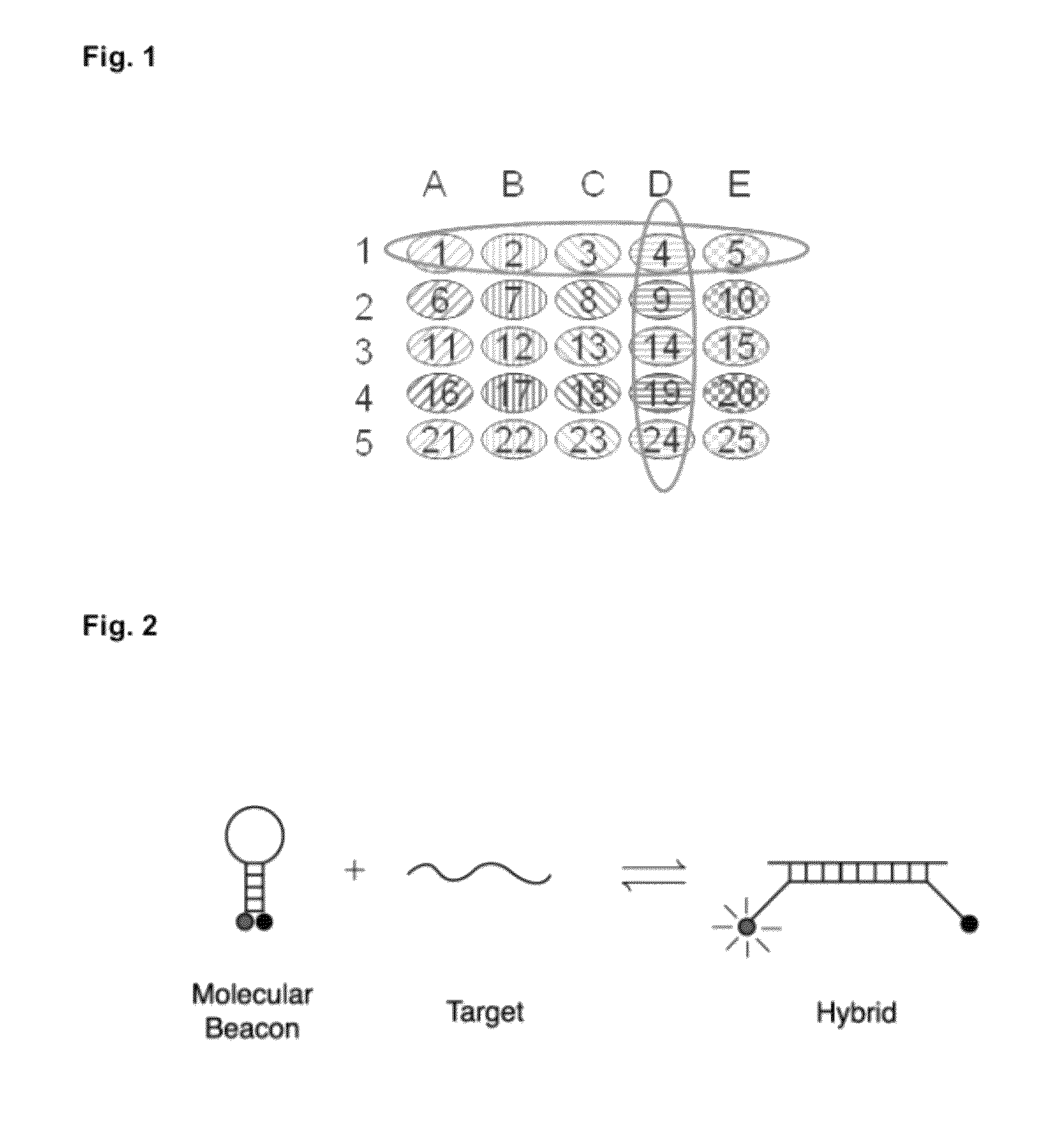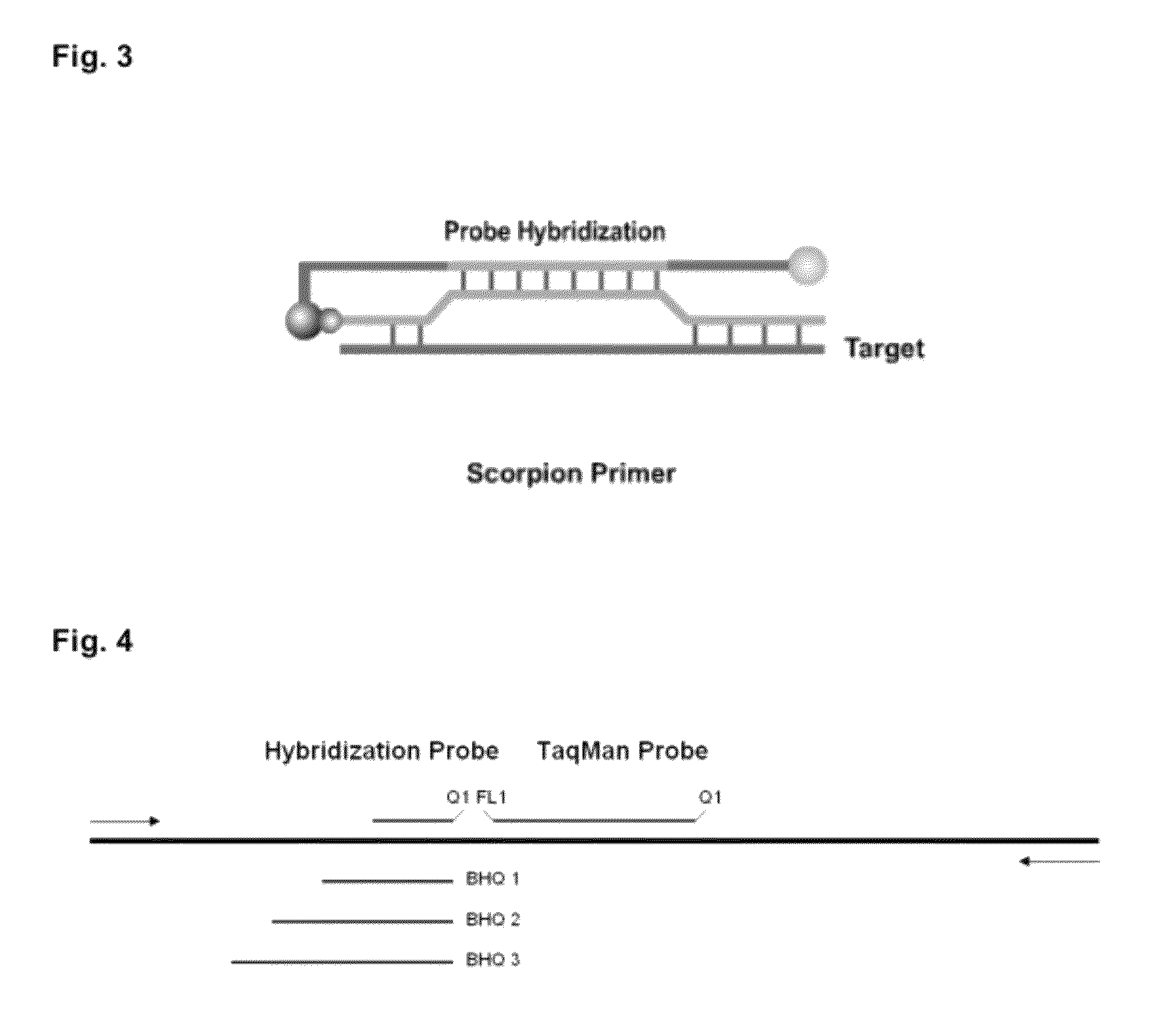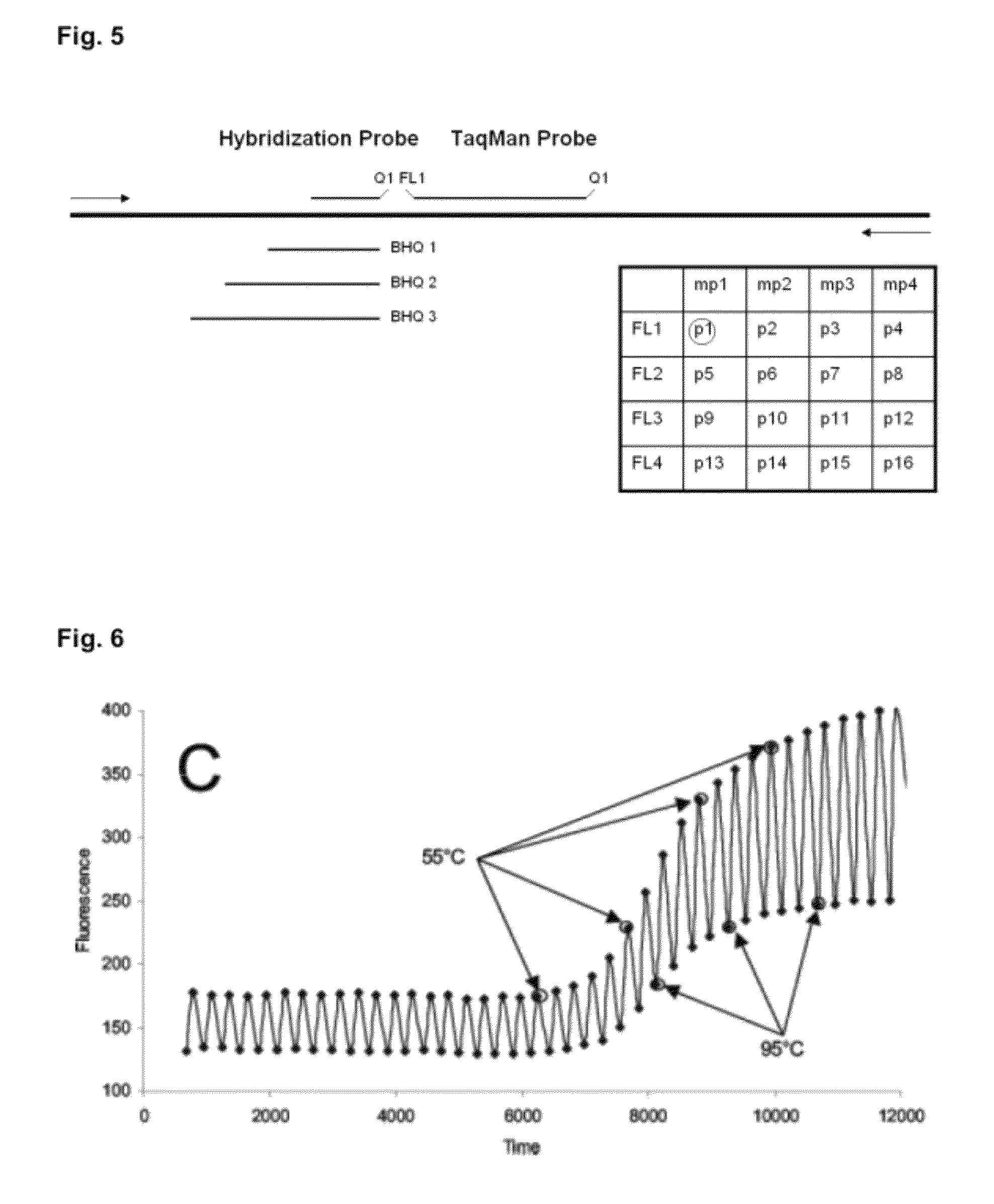Detection of multiple nucleic acid sequences in a reaction cartridge
a technology of reaction cartridge and nucleic acid sequence, which is applied in the field of biological and chemistry, can solve the problems of multiple steps that need to be performed prior to analysis, limited primer pairs and probes, and low autoflouresen
- Summary
- Abstract
- Description
- Claims
- Application Information
AI Technical Summary
Benefits of technology
Problems solved by technology
Method used
Image
Examples
example
Example 1
[0084]Embodiment of the Technical Concept of the Inventive Method for Multiplex Real-Time PCR Followed by Melting Curve Analysis with Fluorescently Labelled Probes
[0085]In this experiment the feasibility of the technical concept shown in the figures shall be demonstrated. The reactions have been composed as shown in the tables below and were setup as quadruplicates and carried out with the protocol shown in table 6. For this purpose the reagents of table 8 were used. Composition of the 20× primer mixes and the 50× probe mix is indicated in table 2 and 3, respectively. Sequences of the primers and probes are shown in table 1. As template nucleic acid in PCR, PCR product was generated using cDNA from human leucocytes and the respective for and rev primers for each target shown in table 1, PCR product was purified using QiaQuick (Qiagen) PCR purification Kit and used at 1:1000 dilution. Templates were added to the individual reactions as given in table 9: In the first case “IC...
example 2
[0100]Realization of the Technical Concept of the Method for Multiplex Real-Time PCR Followed by Melting Curve Analysis for Different Probes Harbouring Distinguishable Tm's Detected in the FAM Detection Channel.
[0101]In this experiment the capability to distinguish several probes carrying the same label in the same detection channel is demonstrated. The reactions have been composed as shown in table 18 and were carried out with the protocol shown in table 17. For this purpose the reagents of table 18 & 19 were used. Composition of the 20× Primer Mixes and the 10pM Probe Mix is indicated in table 13 and 14, respectively. Sequences of the primers and probes are shown in table 12. As template, 10 ng / R×N cDNA generated from RNA from human leucocytes and the respective for and rev primers for each target shown in table 12. Singleplex reactions for each of the four target, duplex and triplex and quadruplex reactions were prepared and analysed. The seven different conditions and expected ...
PUM
| Property | Measurement | Unit |
|---|---|---|
| Tm | aaaaa | aaaaa |
| melting point analysis | aaaaa | aaaaa |
| melting point | aaaaa | aaaaa |
Abstract
Description
Claims
Application Information
 Login to View More
Login to View More - R&D
- Intellectual Property
- Life Sciences
- Materials
- Tech Scout
- Unparalleled Data Quality
- Higher Quality Content
- 60% Fewer Hallucinations
Browse by: Latest US Patents, China's latest patents, Technical Efficacy Thesaurus, Application Domain, Technology Topic, Popular Technical Reports.
© 2025 PatSnap. All rights reserved.Legal|Privacy policy|Modern Slavery Act Transparency Statement|Sitemap|About US| Contact US: help@patsnap.com



